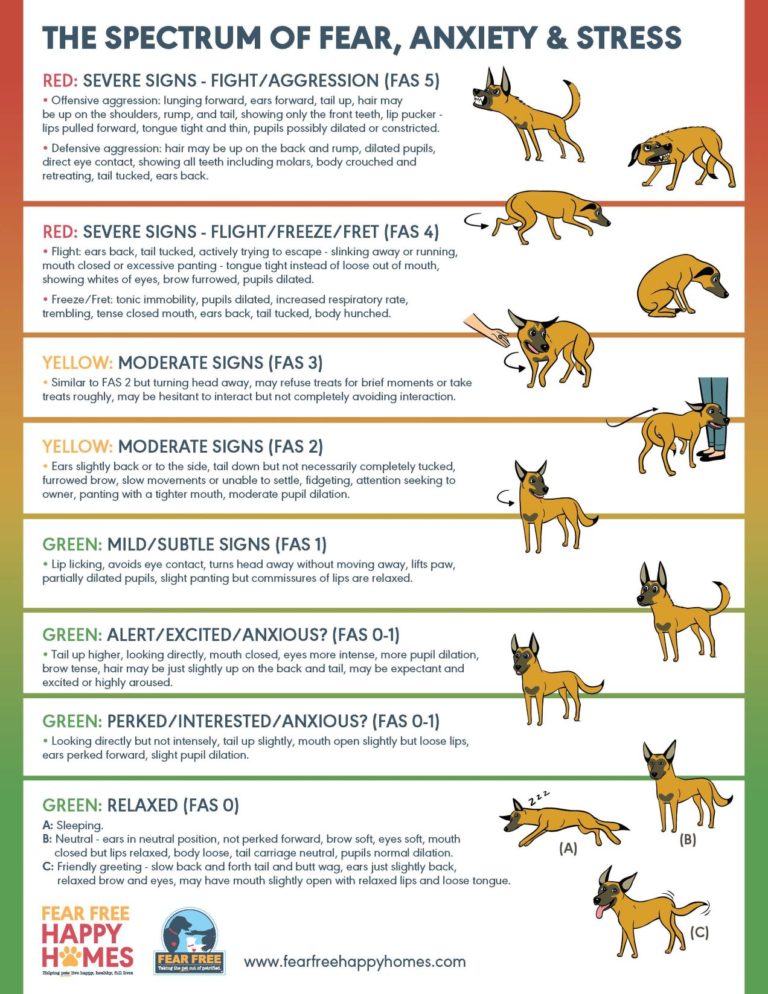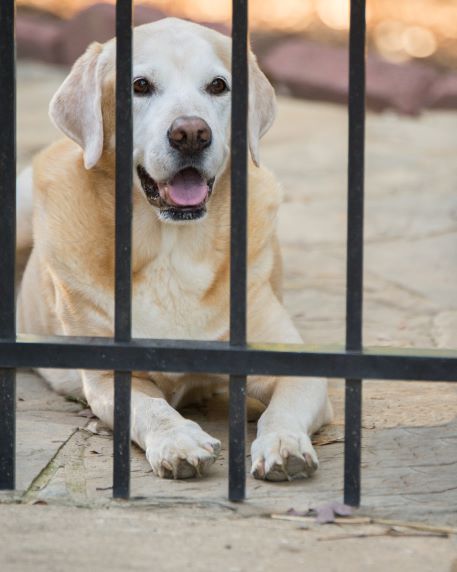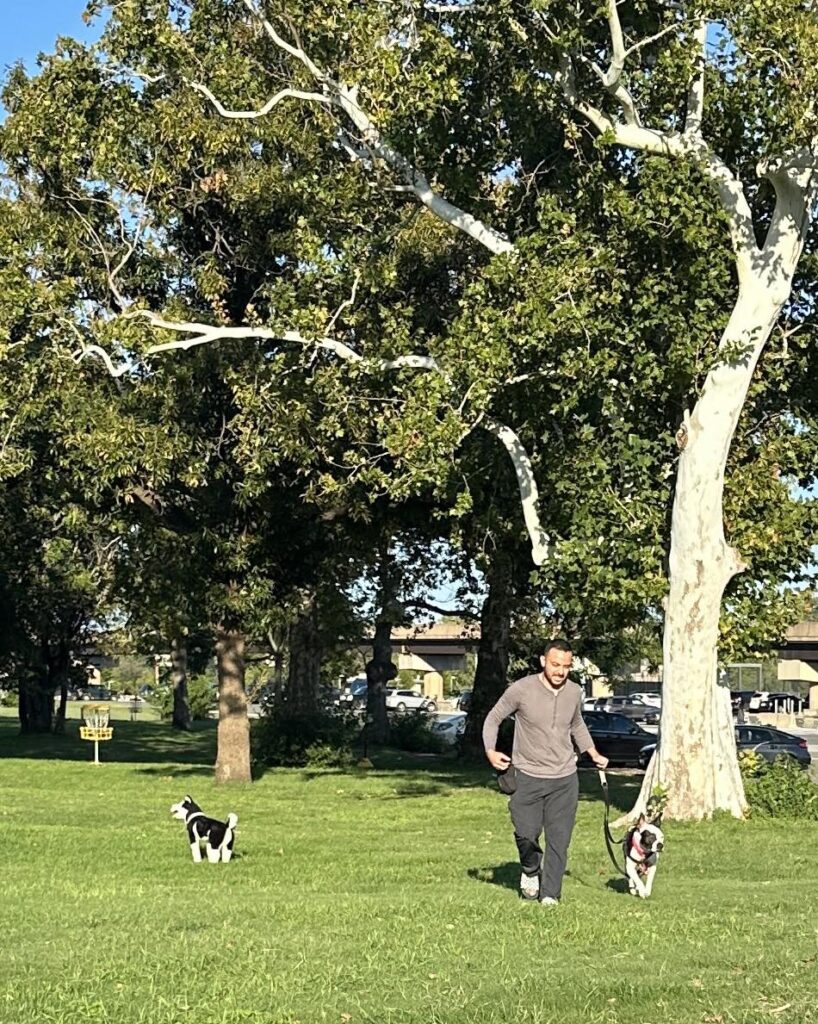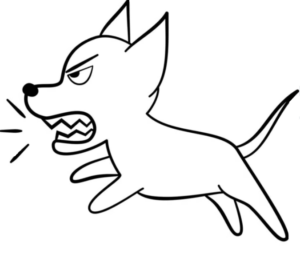Dogs Displaying Aggression
At Calvert Dog Training, we specialize in behavior modification for dogs displaying aggression by understanding and modifying their underlying emotions. Our certified and experienced trainers employ desensitization and classical conditioning techniques, focusing on each dog’s unique triggers and emotional responses. We prioritize safety through measures like muzzle training and keeping a safe distance from triggers. Our approach is compassionate and patient, tailored to meet each dog’s specific needs.
At Calvert Dog Training, we offer compassionate, effective training for dogs displaying aggression, using tailored techniques to modify behavior and emotions for a safer, happier pet.
Dog Body Language of Dogs Displaying Aggression
Your dog might manifest their stress through aggression. One way to comprehend your dog’s feelings is through the ‘ladder of aggression.’ Have you heard of this concept? It’s an informal method for gauging the level of aggression exhibited by your dog. Your pet may display subtle, moderate, or severe signs of stress, and understanding the extent of these signs aids us in tailoring our behavior modification training.
Stress in your dog may arise due to triggers in their environment. There’s a myriad of potential triggers for a dog. Some clients report their dogs react to the sound of the UPS truck, while others have noticed their pets become anxious when new people enter the home. There are dogs that guard their food or toys, and some are sensitive to sudden noises, causing them to panic at the slightest unexpected sound. Whatever your dog’s triggers may be, our Fear Free Certified Trainers can help!
To begin, understanding the ‘ladder of aggression’ can be quite beneficial.

What aggression looks like
A dog who is stressed and reacting aggressively may:
- freeze in place or pace excessively,
- excessively pant or keep their mouth tightly shut,
- have a “spatulated tongue,” where their tongue is out, flat and cupped,
- display a “lip pucker” with lips pulled forward or a vertical retraction of the lips,
- show their front teeth,
- have hair standing up on their back,
- hold their tail up or tucked,
- hold their ears forward,
- lunge forward
- bark, snarl, growl, and
- bite.
Safety around a Dog who is displaying aggression
Our first step is always to ensure that everyone in the home is safe. This may or may not apply to your home and your dog, but we always check the level of potential risk involved. Your trainer will ask you about your dog’s bite history, as this is a helpful indicator to know if a dog may feel the need to bite in the future. For aggressive dogs, safety measures that we employ may include:
- leashed clipped to the back of a body harness, to prevent a dog from lunging,
- a fence barrier between your dog and any “friendly strangers,”
- muzzle training, and
- providing enough distance between your dog and their triggers so that they are not reacting to their triggers.

Choose Behavior Modification over Behavior Suppression
Our certified Dog Trainers partner with you and your pet, employing modern dog training techniques. We utilize a blend of desensitization and classical conditioning to help your dog surmount their fears. Our goal is to modify the underlying emotional response to a trigger, thus preventing your dog from feeling the need to react.
We never aim to suppress your dog’s reaction to a trigger as it’s unsafe for all parties involved. We do not use prong, shock, or choke collars because they have been proven to escalate avoidance behaviors in dogs. While they might appear to resolve a dog’s behavior, such tools only suppress a dog’s outward reaction without addressing their internal feelings towards their triggers. With the use of a prong collar, a dog might no longer feel safe enough to signal their discomfort, which can exacerbate the issue.

Have you ever heard the saying, “don’t punish the growl?” It’s sage advice. When we penalize a dog for growling, it learns that expressing discomfort is unsafe. We are essentially suppressing the dog’s reaction; they no longer feel free to communicate their discomfort. Instead, they learn to silently endure their triggers, not signaling their unease until they can’t bear it any longer and react suddenly. This is a precarious situation for everyone involved. Preferably, we want our dogs to inform us when they’re uncomfortable, allowing us to help them understand that this predominantly human-centric world is safe for them. In doing so, they trust their safety and can simply be a dog!
Our dog training philosophy offers scientifically sound methods to our clients. We employ reward-based training and begin by understanding and meeting our dog’s needs. Subsequently, we modify the underlying emotional response to triggers using the established principles of animal learning.
The Behavior Modification Process
Step 1: Body Language
The first step is to understand your dog’s body language. What does it look like when your dog is uncomfortable?
Step 2: Relaxation
Does your dog know how to relax? If not, we work on strategies to help with the extra energy.
Step 3: Trigger List
We help you compile a list of the things that trigger your dog’s response. Once we know what makes your dog react aggressively, we can address it!
Step 4: Desensitization
Desensitize your dog means working gradually so as to not push your dog over their threshold. We work gradually, in order to make the biggest gains.
Step 5: Reconditioning
Remember how Pavlov trained his dogs to salivate every time they heard a dinner bell? We follow the same process to help change your dog’s reaction to their triggers.
Transform Your Dog’s Behavior with Compassion and Expertise
Struggling with an aggressive dog? Our 2-lesson package is specifically designed to bring peace and understanding into your home. Begin with a personal online consultation with one of our senior dog trainers, dedicated to understanding your unique challenges.
We understand that every dog is different. That’s why we space your lessons two weeks apart, giving both you and your furry friend time to absorb and adapt to new training protocols. During this journey, your trainer will work closely with you to identify and apply the most effective strategies tailored to your dog’s specific needs.
Ready to embark on a transformative journey with your dog? Click the buttons below to sign up now and start building a happier, safer relationship with your pet.

Transforming Challenges into Opportunities: Our Approach to Dogs Displaying Aggression
At Calvert Dog Training, we understand the complexities and challenges of working with aggressive dogs. Our approach is rooted in compassion, patience, and a deep understanding of canine behavior. In our 30-minute online consultations, we offer expert advice tailored to the unique needs of your dog. Our experienced trainers provide insights and strategies to help manage and modify aggressive behavior. Priced at a special introductory rate for the first 30 minutes, these sessions are a valuable step towards understanding and effectively addressing aggression in dogs. Let us guide you and your dog towards a safer, more harmonious relationship.


